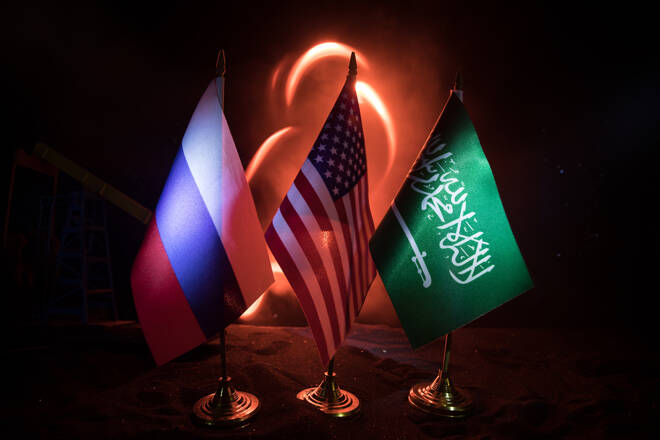Advertisement
Advertisement
Breakeven Crude Oil Production Costs Around The World
By:
Intro
When it comes to supply and demand fundamentals in the world of commodities, one of the most significant factors is the cost of production.
If the market price of a raw material is higher than its cost of extracting it from the crust of the earth or any other form of production, it leads to increased output. A profitable production process provides an incentive for output.
When the cost of production is higher than the market price, output declines as it becomes a losing proposition. The price cycle in commodities causes prices to rise to levels where production increases. Higher output leads to growing inventories. As a market becomes more expensive, the elasticity of demand causes consumers to look for substitutes and buying declines, leading to price tops and reversals to the downside.
When the price of a commodity falls below the cost of production, output slows. The demand tends to increase as consumers take advantage of lower prices, and inventories begin to decline, leading to price bottoms. The price cycle in a commodities market can change because of exogenous events, but it tends to be efficient. High prices lead to glut conditions, and low prices often create shortages, over time. Production cost is one of the critical variables that fundamental analysts use to project the path of least resistance for market prices.
In the crude oil market, output costs vary according to the production location. Saudi Arabia, Russia, and the United States are the three leading oil-producing nations in the world, and each has different sensitivities to output costs.
Saudi Arabia- Think turning on a garden hose
Over half the world’s crude oil reserves are in the Middle East, and Saudi Arabia is the leading producer in the region. The Saudis have long been the most potent force within OPEC, the international oil cartel. Saudi Arabia’s vast reserves make production as easy as turning on a garden hose in our backyards for the country.
Meanwhile, the Saudi economy depends on oil revenues. The rising costs of running the country have pushed the break-even level of the price of the energy commodity to over $80 per barrel on the Brent benchmark. While the nominal production cost of oil is the lowest in the world in Saudi Arabia at $2.80 per barrel, the requirements for revenues creates a wide gap between production economics and balancing the Saudi budget.
Russia- Output costs may not matter as much in the west
Russia is an enigma when it comes to the cost of production for the energy commodity. The Russians, under President Vladimir Putin, is structured as an oligarchy. A small group runs the nation’s economy. Therefore, the production cost of crude oil is an enigma and a state secret. In 2020, the Russian leader had said that he is comfortable with a Brent price around the $40 per barrel level. The statement could shed at least some light on the price level for the energy commodity that provides enough revenue to keep the system running smoothly.
The US- The marginal producer in the world
In the 1970s and 1980s, the United States was dependent on oil imports from the Middle East. Rising prices during this century, combined with reserve discoveries in shale regions, caused production to increase. Moreover, technological advances in extracting crude oil from the crust of the earth and regulatory reforms under the Trump Administration caused daily output to rise to over 13 million barrels per day, making the US the world’s leading producer and achieving the goal of independence.
The US is a marginal producer. While production costs have declined, they are still around the $30 to $40 per barrel level. The US is in a position where it is a dominant marginal producer. When the price of oil rises above production costs, the output can increase. When it falls below, the US can turn off production and import inexpensive crude oil from other nations.
In any commodity, the production cost is a critical factor when it comes to the fundamental supply and demand equation. Pricing cycles take prices above and below break-even output costs at times. Each leading producer has different requirements when it comes to prices, which makes a global analysis complicated and the worldwide break-even equation for crude oil an economic and geopolitical enigma.
About the Author
Andrew Hechtauthor
Andrew is a sought-after commodity and futures trader, an options expert and analyst. Over the past decades, he has researched, structured and executed some of the largest trades ever made, involving massive quantities of precious metals and bulk commodities.
Advertisement
Advertisement
Advertisement
Advertisement
Advertisement
